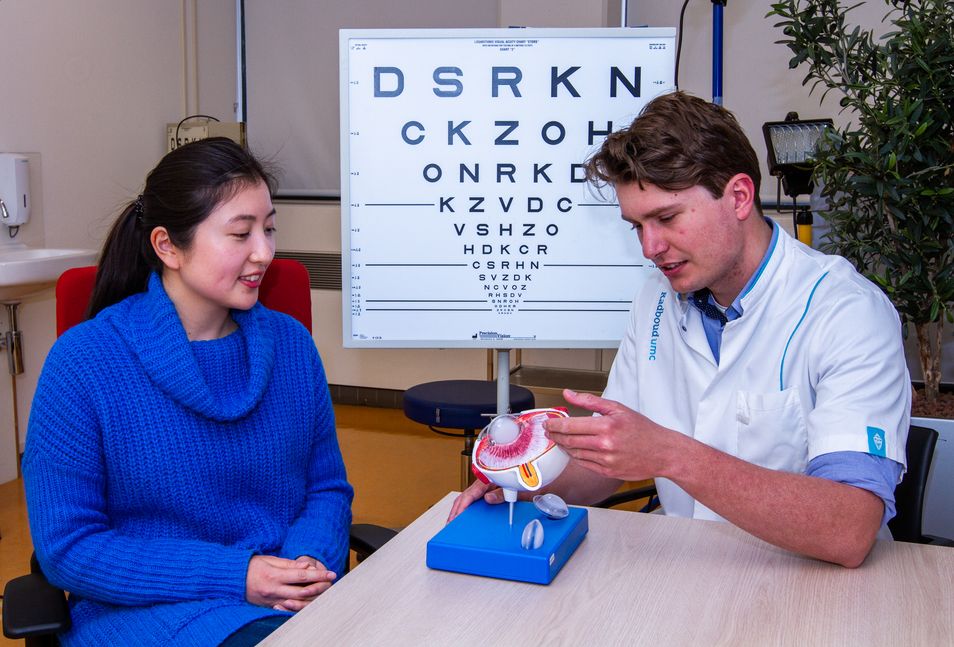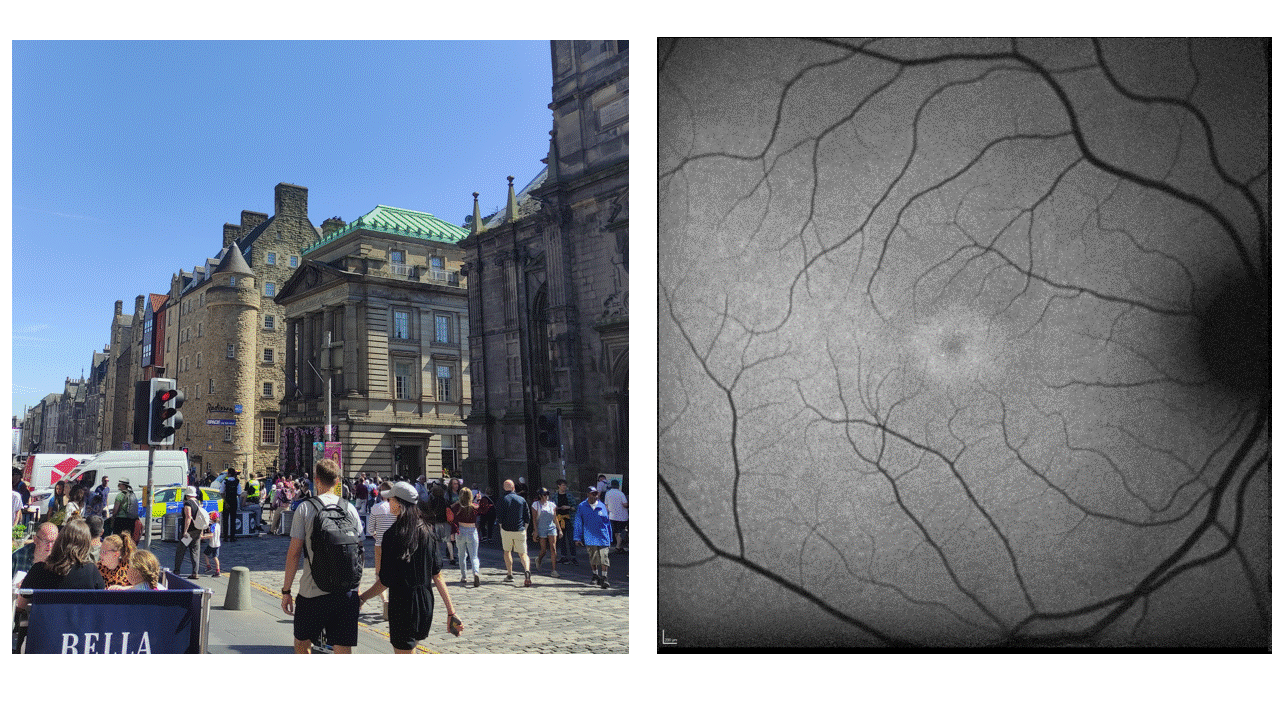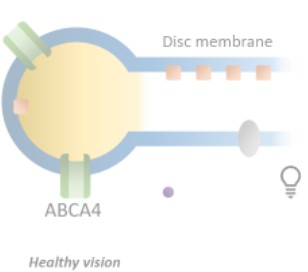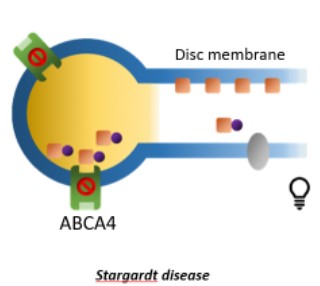What is Stargardt disease (STGD1)?
Stargardt disease (STGD1) is an inherited retinal disease, which affects the central part of the retina. As a consequence, people with STGD1 lose visual function over time. STGD1 is the main cause of central vision loss (macular degeneration) in children and young adolescents. The worldwide prevalence of STGD1 is around 1:10.000. In the Netherlands, there are around 1.200 diagnosed patients with STGD1.

What causes STGD1?
Genetic testing has revealed that STGD1 is caused by mutations in the ABCA4 gene. This gene encodes the ABCA4 protein, a transmembrane protein in retina cells which is essential for vision. When light enters the eye, a chemical cascade -called the visual cycle- is activated, ultimately leading to a signal that is send to the brain to create an image. ABCA4 functions as a transporter protein in this visual cycle. Mutations in the ABCA4 gene can lead to a reduction in the amount of (functional) ABCA4 that is present, or even lead to a total loss of ABCA4 protein production. When there is an insufficient amount of functional ABCA4 protein, waste compounds accumulate in the retina. This leads to damage to retinal cells, and in the end loss of visual function.
What are the symptoms of STGD1?
Patients with STGD1 gradually lose vision, especially in the centre of the visual field, and can ultimately become blind. In the animation on the right you can see this process of decay of visual function.
The left side of the animation shows that visual complaints range from loss of colour vision, loss of visual acuity, to ultimately formation of a blind spot in the centre of the visual field. On the right, you can see the corresponding changes in the retina that are characteristic for STGD1, on autofluorescent images of the retina made over time. These changes are: formation of white flecks, reflecting accumulation of waste products, and darkening of the centre of the retina, showing death of retinal cells in the macula.

What difference are present between STGD1 patiens?
There is a variability between patients in the age of onset and speed of progression of the disease. The clinical picture of STGD1 can roughly be divided into three groups based on the age at which the disease manifests (see the figure on the left):
- Early-onset STGD1 affects young children in their first or second decade of life, and generally leads to a rapid decline in visual acuity and severe visual impairment before the second decade of life;
- Intermediate-onset STGD1 typically manifests between in adolescence or adulthood, and is known for a widely varying clinical presentation;
- Late-onset STGD1 manifests after the age of ~40-45 years. The fovea is preserved for several years, however, due to large scotoma’s surrounding the center of vision patients can experience severe complaints.



